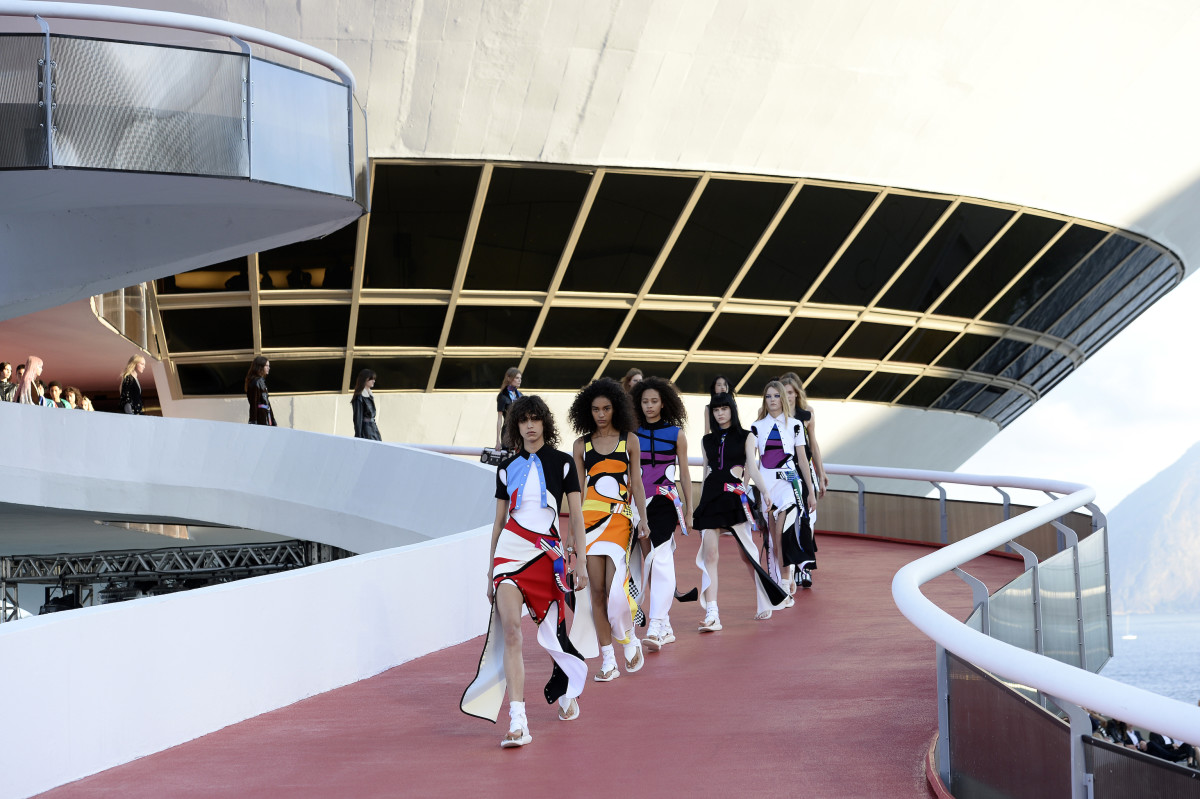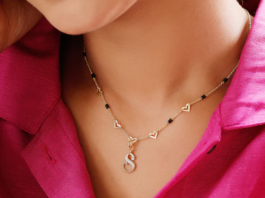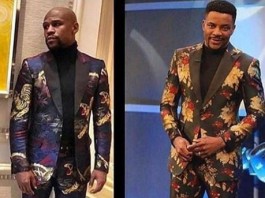

The Louis Vuitton Cruise 2017 runway show in Niteroi, Brazil. Photo: Fernanda Calfat/Getty Images
What do Tom Ford, Raf Simons, Pierre Balmain, Pierre Cardin and Gianni Versace all have in common? Before kickstarting a flourishing career in fashion, each of these individuals enrolled to study architecture or industrial design.
Fernando Garcia, one-half of the creative director duo behind Monse and Oscar de la Renta, is among that list of designers. He graduated with an architecture degree from Notre Dame — though he vividly remembers secretly reading Harper’s Bazaar or Vogue during lectures in college. (Sorry, Professor Economakis.) “There’s a great sense of satisfaction for me when I’m able to see my designs come to life in a matter of a week or two,” Garcia tells Fashionista when asked about making the switch to a career in fashion. He says his degree is still applicable even when he’s designing clothes, especially when it comes to a general sense of proportion: “I find a building’s façade, for example, to be similar to when I’m trying to find a balance in designing any garment.”
For these designers and their respective brands, along with a slew of others in the fashion industry, architecture serves as an evergreen source of inspiration. “They are both visually driven expressions of personal taste and the times we live in,” says Jane Keltner de Valle, Style Director at Architectural Digest. She cites Virgil Abloh, the brains behind Off-White, as another designer who heavily references architecture in his work. After earning his engineering degree from the University of Wisconsin, Abloh went on to study architecture for graduate school at the Illinois Institute of Technology. “He’s a prime example of someone who doesn’t confine himself to any one medium,” notes Keltner de Valle.
In addition to running a global luxury line, Abloh has created a capsule furniture collection, collaborated with Ikea and has plans to publish a series of books that showcase his clothes alongside iconic structures by Le Corbusier and Mies Van Der Rohe. In an interview with Architectural Digest, Abloh told Keltner de Valle, “The idea is to teach my demographic — the younger generation who’s immersed in fashion — about architecture through these sites.”
Though Nicolas Ghesquière‘s education and career is rooted in fashion design, his passion for architecture is widely recognized when it comes to his runway shows. Ghesquière’s Louis Vuitton cruise collections have made their debut within some of the most spectacular works of architecture, including Oscar Niemeyer’s Niterói Contemporary Art Museum in Brazil, and most recently, the I.M. Pei-designed Miho Museum, just outside of Kyoto in Japan.
“I think when I started at Louis Vuitton, I always had this feeling that it had to be travel. And today, people travel a lot for architecture, not only for monuments — and I always thought that the exploration and voyage side of Louis Vuitton could be an architectural journey,” Ghesquière told Suzy Menkes during an interview for Vogue.com UK on his Louis Vuitton Cruise 2016 runway show, which took place at Bob Hope’s home in Palm Springs.
But does fashion ever influence architects? Last spring, I attended Pratt’s annual student graduation show and while leaving the event’s venue, I ended up walking alongside an older couple chatting about the show — or rather, disagreeing. I had gathered that the man speaking had a background in architecture and was telling the woman who was with him about how the runway looks he had just witnessed displayed techniques and practices that would have never been approved in architecture school. Their brief debate is what prompted me to explore the parallels between these two creative fields in the first place.
I posed my question to Dragana Zoric, an adjunct associate professor of architecture at Pratt. She believes that fashion and architecture, at their core, are focused on assembly. The architectural system and technique of “fastening” connects forms or materials in a variety of ways, where sequence is of utmost importance. Fashion’s construction of clothing through patternmaking and sewing follows a similar type of protocol.
“Just like there is a difference between the body and the garment that encases or covers it — for example, the difference would be minimal if clothing was body-hugging — there is a relationship between the building’s structure and skin,” says Zoric. “Both fields utilize, as a base language, innovation, experimentation and fluency with color and texture. In this way, architecture follows fashion.”
At RISD, Carl Lostritto, the architecture school’s Graduate Program Director and Assistant Professor, doesn’t necessarily see architecture pulling from fashion, but rather says that “there’s a territory where the water is muddy and they overlap.” What both Zoric and Lostritto can agree on is that fashion’s advances in fabric manipulation — like digital laser cutting or the use of a 3-D printer — can translate directly into architectural techniques used to define a building’s structural surfaces. “Behaviors of fabrics can be extracted and implemented to work on architectural membranes. I have taught several studios with these as themes,” says Zoric.
In our conversation, Lostritto also brings up the late architect Zaha Hadid, who once told Vogue.com that she’d had an interest in fashion since she was a kid. Hadid is both well-known in the fashion world and regarded as a legend in the field of architecture; she worked with high-end brands, playing a role in creating Chanel’s Mobile Art Pavilion, for example, and also tried her hand at fashion design, collaborating with United Nude, Georg Jensen, Fendi, Melissa and Bulgari, among others. Her creations were more structural, naturally, spanning from jewelry and shoes to handbags. During Marc Jacobs‘s tenure at Louis Vuitton, he invited Hadid to design her own version of the French house’s iconic bucket bag, which was on display at a special “Icones” exhibit in Paris in 2006.
On a more aesthetic level, fashion designers have also crossed over to interior design, says Keltner de Valle. Pierre Yovonovitch, who used to work at Pierre Cardin, is a rising talent in Paris, while Remy Renzullo, who used to design for Wes Gordon, pursued his talents in interior decorating at the encouragement of Lauren Santo Domingo. “He is now working on a project for her and just finished the New York City apartment of model Jessica Hart,” Keltner de Valle tells us. (You can catch Renzullo’s work in the September issue of Architectural Digest.) Though Kenzo Takada is no longer associated with his eponymous line, he recently collaborated with high-end French furniture company Roche Bobois. Even online, fashion bloggers are turning into home decor influencers.
“It’s all quite fluid,” says Keltner de Valle. “I think there’s always been crossover and fluidity between the two worlds, but we’re seeing it more than ever before now. There are no walls or barriers for the new generation. It’s really refreshing, and I think it’s resulting in some of the best design we’ve seen in a long time.”
Want more Fashionista? Sign up for our daily newsletter and get us directly in your inbox.












